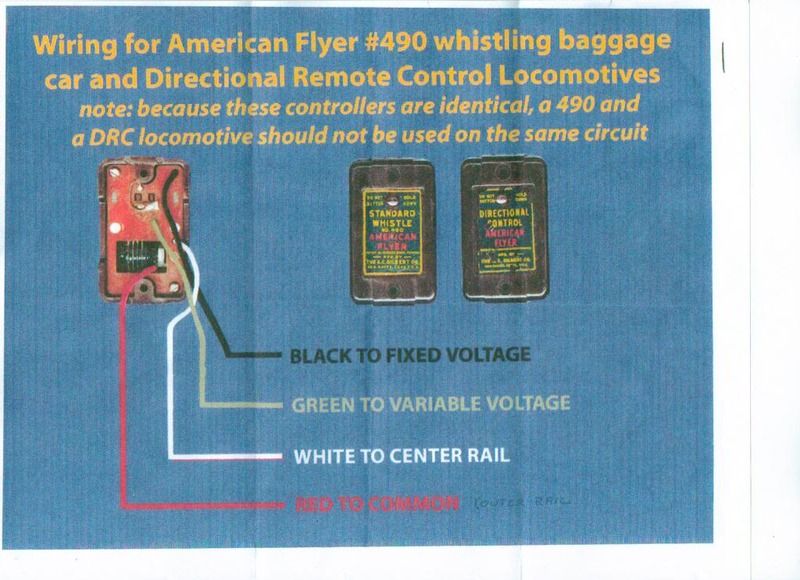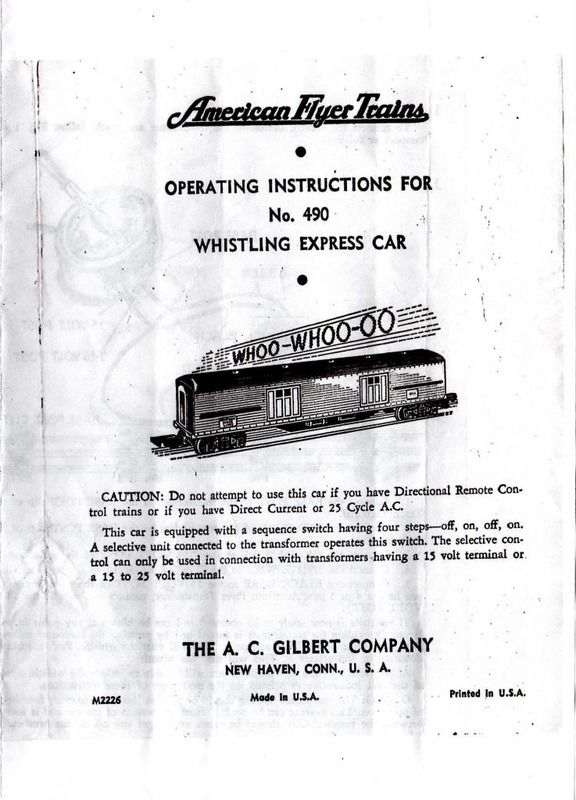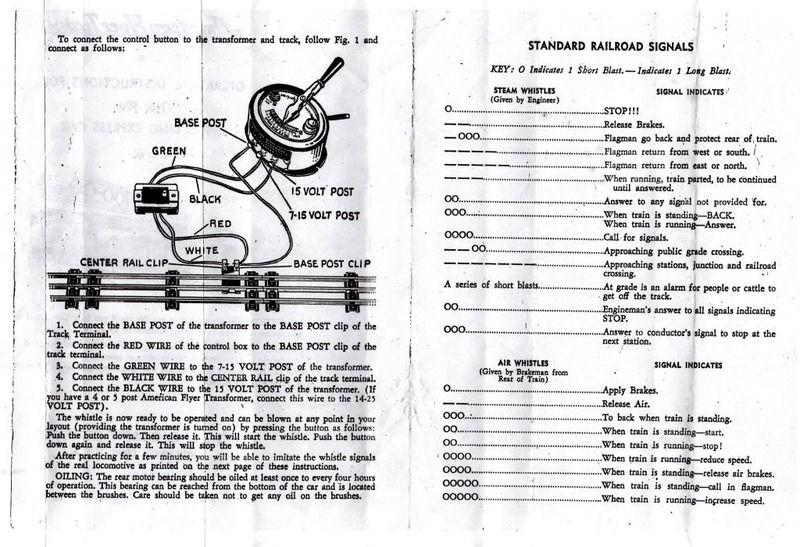I do not have the controller. I hope the owner does.
Confusing to me though that the relay is energized by AC voltage?
Take a look at this post from the CTT Flyer "O" Gauge thread.
http://cs.trains.com/ctt/f/95/t/211963.aspx
Member "Gray Cat" has some good information on the operation of pre-war Flyer. The controller for the Remote Directional Control 4-8-4 appears to be the same as the one for the 490. Scroll down to the section on operating cars and you will find a small section on the 490. According to Gray Cat, a Lionel transformer whistle control will operate the 490 (and also the Remote Directional Control 4-8-4). This makes sense since Gilbert was supposedly sued (urban legend?) for patent infringement by Lionel over the operation of their whistle control system (most often mentioned in discussions of the S-Gauge 314AW Pacific which used a somewhat similar mechanism ).
I mention this as a possible suggestion that might allow you to test the 490 without the original controller. Perhaps you have access to a Lionel transformer with a whistle control that "might" work.
It's worth a try. Let us know if you figure things out.
* * * * * * * * * *
EDIT: As an aside, I should mention that I have a Flyer S-Gauge 314AW but do not have an original whistle control. I have found that the whistle/horn/bell control button (6-5906) that comes packed with some Lionel/Flyer locomotives will actually activate the whistle on my 314AW (though I've been told it shouldn't work). Also, You can occasionally find sort-of-replica 314AW whistle controllers for sale on eBay that are made with modern electronics. I suspect that they would work with a 490, but I can not attest to this.







